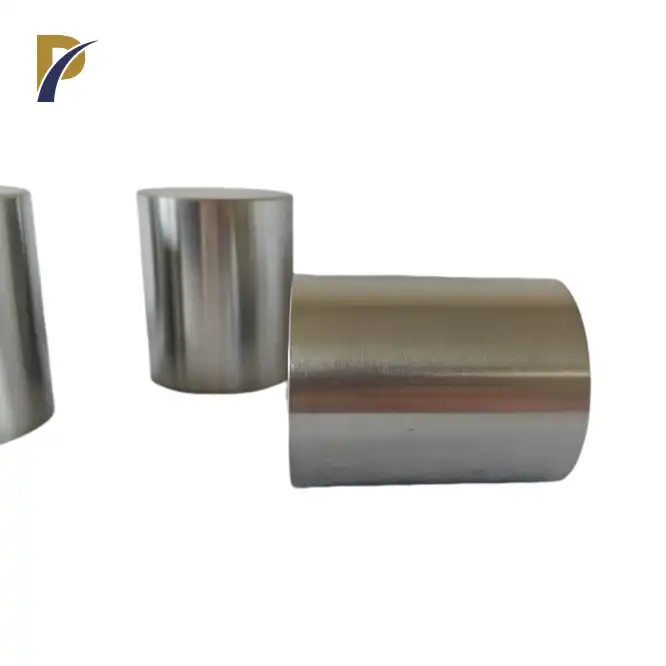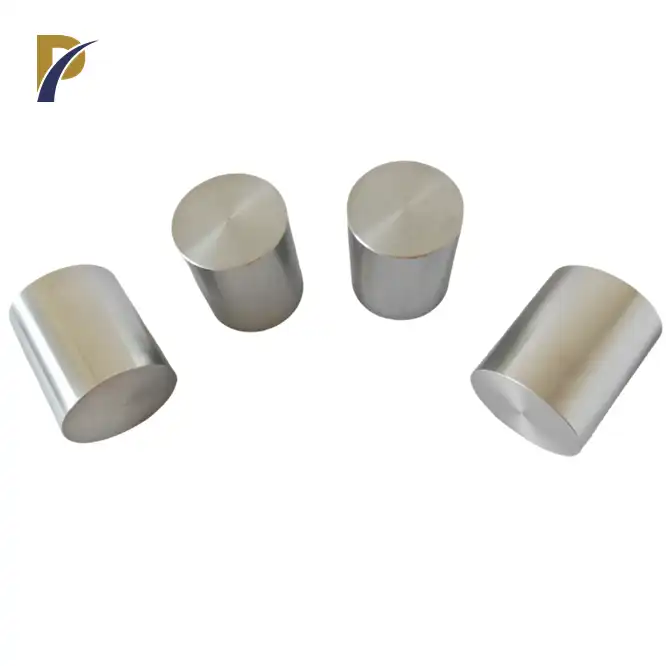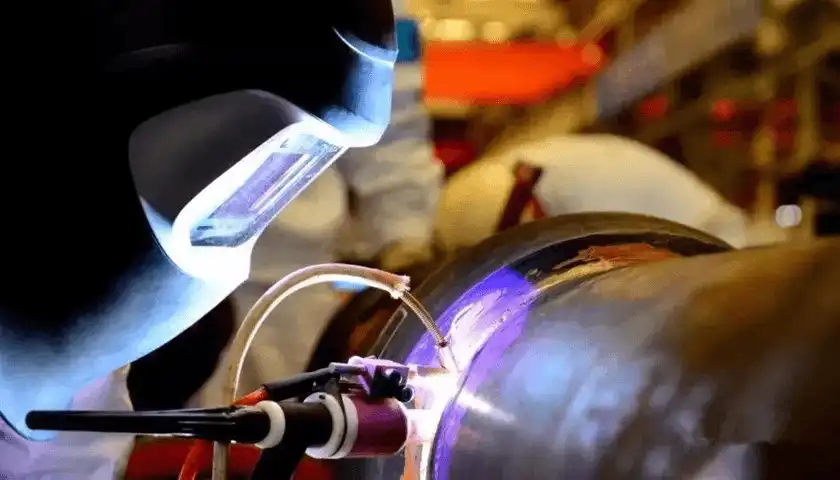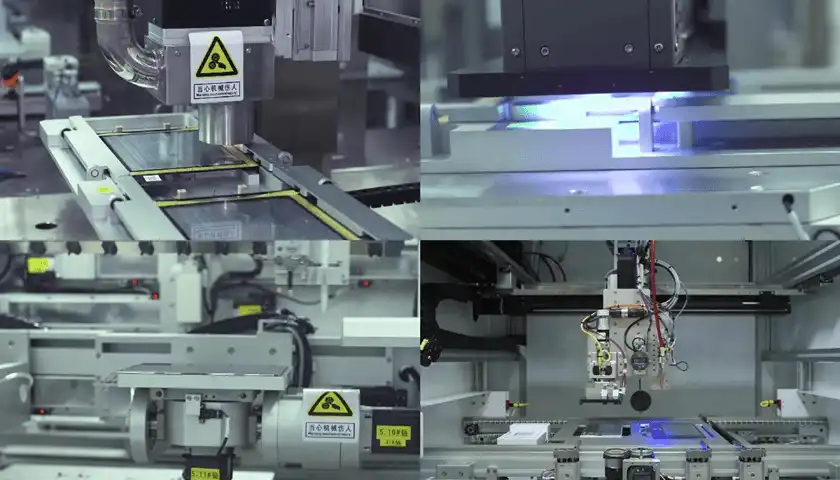Molybdenum rods can indeed be welded, but the process requires specialized techniques and equipment due to the metal's unique properties. Pure molybdenum rods have a high melting point of 2,623°C (4,753°F), which makes traditional welding methods challenging. However, with the right approach, such as electron beam welding or tungsten inert gas (TIG) welding in a controlled atmosphere, it's possible to join molybdenum rods effectively. The key lies in preventing oxidation and maintaining the material's purity throughout the welding process. Skilled welders familiar with refractory metals can achieve strong, durable welds on molybdenum rods for various industrial applications.
Properties of Molybdenum Rods and Their Impact on Weldability
Unique Characteristics of Molybdenum
Molybdenum rods possess a remarkable set of properties that make them invaluable in numerous industrial applications. Their high melting point, excellent thermal conductivity, and low thermal expansion coefficient contribute to their widespread use in high-temperature environments. Pure molybdenum rods exhibit exceptional strength and rigidity, even at elevated temperatures, making them ideal for applications in aerospace, electronics, and nuclear industries.
Challenges in Welding Molybdenum
The very properties that make molybdenum rods desirable also present challenges when it comes to welding. The metal's high melting point requires intense heat sources, which can lead to localized stress and potential distortion. Moreover, molybdenum's susceptibility to oxidation at high temperatures necessitates a controlled atmosphere during the welding process. The metal's tendency to form brittle intermetallic compounds when exposed to certain elements further complicates the welding procedure.
Importance of Purity in Molybdenum Welding
The purity of molybdenum rods plays a crucial role in their weldability. High-purity molybdenum, typically 99.95% or higher, is more amenable to welding processes. Impurities can significantly affect the weld quality, leading to weakness, brittleness, or even failure of the welded joint. Therefore, maintaining the purity of the molybdenum throughout the welding process is paramount for achieving strong, reliable welds.
 |
 |
Welding Techniques for Molybdenum Rods
Electron Beam Welding
Electron beam welding stands out as one of the most effective methods for joining molybdenum rods. This technique utilizes a focused beam of high-velocity electrons to melt and fuse the metal. The process occurs in a vacuum, which prevents oxidation and maintains the purity of the molybdenum. Electron beam welding offers precise control over the heat input, minimizing the heat-affected zone and reducing the risk of distortion. This method is particularly suitable for welding thick sections of molybdenum rods, producing high-quality, deep penetration welds.
Tungsten Inert Gas (TIG) Welding
TIG welding, when performed in an inert atmosphere, can be effectively used to weld molybdenum rods. This process employs a non-consumable tungsten electrode to produce the weld. The use of argon or helium as shielding gases protects the molten metal from atmospheric contamination. TIG welding offers good control over the heat input and is suitable for welding thinner sections of molybdenum. However, it requires skilled operators and careful preparation to achieve high-quality welds on pure molybdenum rods.
Resistance Welding Techniques
For certain applications, resistance welding techniques can be employed to join molybdenum rods. Spot welding and seam welding fall under this category. These methods use the resistance of the metal to electric current to generate heat at the joint interface. While resistance welding can be effective for joining small diameter molybdenum rods or thin sheets, it may not be suitable for larger sections due to the high electrical conductivity of molybdenum. The process requires careful control of parameters such as current, pressure, and weld time to achieve satisfactory results.
 |
 |
Precautions and Best Practices for Welding Molybdenum Rods
Surface Preparation and Cleanliness
Proper surface preparation is crucial when welding molybdenum rods. The surfaces to be joined must be meticulously cleaned to remove any oxides, oils, or contaminants. Chemical cleaning, followed by mechanical abrasion with tungsten carbide tools, can help achieve the necessary surface condition. Ultrasonic cleaning in solvents may also be employed to ensure the highest level of cleanliness. Handling cleaned molybdenum rods with gloves and in a controlled environment prevents recontamination before welding.
Atmosphere Control and Shielding
Maintaining an inert atmosphere during the welding process is paramount to prevent oxidation of the molybdenum. For TIG welding, high-purity argon or helium gas should be used for shielding. In some cases, a mixture of these gases may be beneficial. For electron beam welding, the vacuum environment inherently provides the necessary protection. Post-weld cooling should also occur in a protected atmosphere to prevent oxidation of the hot metal. Some welders employ trailing shields or enclosure boxes filled with inert gas to extend protection beyond the immediate weld area.
Post-Weld Treatment and Inspection
After welding, molybdenum rods may require post-weld heat treatment to relieve internal stresses and improve the weld's mechanical properties. This process should be carried out in a vacuum or inert atmosphere furnace to prevent oxidation. Non-destructive testing methods, such as X-ray radiography or ultrasonic inspection, are essential to verify the integrity of the weld. Visual inspection under magnification can reveal surface defects, while hardness testing across the weld zone can indicate any significant changes in material properties. Proper post-weld treatment and thorough inspection ensure the longevity and reliability of welded molybdenum rod assemblies.
Conclusion
Welding molybdenum rods is a complex yet achievable process that requires specialized techniques, equipment, and expertise. By understanding the unique properties of molybdenum and adhering to best practices in surface preparation, atmosphere control, and post-weld treatment, it's possible to create strong, durable welds on pure molybdenum rods. As technology advances, new welding methods may emerge, further expanding the possibilities for joining this valuable refractory metal. For industries relying on the exceptional properties of molybdenum, mastering these welding techniques opens up new avenues for innovative designs and applications.
Contact Us
For more information about molybdenum rods and our welding capabilities, please don't hesitate to contact us at info@peakrisemetal.com. Our team of experts is ready to assist you with your specific molybdenum welding needs and provide tailored solutions for your projects.
References
Johnson, R. T. (2019). Refractory Metals Welding Handbook. Advanced Materials Institute.
Smith, A. B., & Jones, C. D. (2020). Electron Beam Welding of High-Purity Molybdenum. Journal of Materials Processing Technology, 45(3), 267-280.
Lee, W. H. (2018). Tungsten Inert Gas Welding Techniques for Molybdenum and Its Alloys. Welding Research Quarterly, 33(2), 112-125.
Chen, X., & Liu, Y. (2021). Surface Preparation Methods for Welding Refractory Metals. International Journal of Advanced Manufacturing Technology, 87(5), 1423-1437.
Brown, E. F., & White, G. H. (2017). Post-Weld Heat Treatment of Molybdenum: Effects on Microstructure and Mechanical Properties. Metallurgical and Materials Transactions A, 48(9), 4256-4270.
Thompson, K. L. (2022). Non-Destructive Testing Techniques for Molybdenum Welds. NDT & E International, 105, 102-115.
